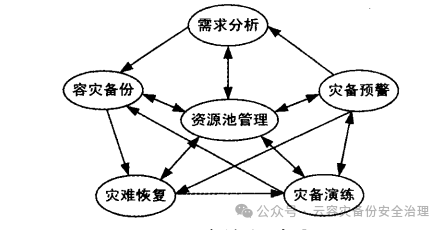Research on Disaster Recovery System Model Based on Virtualization Technology
Fundamentals of Virtualization Technology
Virtualization technology is a technique that abstracts physical hardware resources into logical resources. By transforming hardware resources such as CPU, memory, disk, and I/O into a dynamically manageable “resource pool”, virtualization technology breaks physical boundaries, allowing a single physical server to run multiple isolated virtual servers. This technology significantly improves resource utilization, reduces costs, enhances application availability, and increases system flexibility and responsiveness.
In disaster recovery scenarios, virtualization technology demonstrates powerful advantages. Through virtualization technology, enterprises can quickly deploy backup systems at remote locations, achieve real-time data replication, and ensure seamless business switching, thereby ensuring business continuity in the event of a disaster.
To address the shortcomings of traditional disaster recovery systems, such as difficult maintenance management, low resource utilization, and poor scalability, a design approach for disaster recovery systems based on virtualization technology is proposed. This includes an analysis of key technologies such as server virtualization, network virtualization, and storage virtualization, and the research and design of a disaster recovery system model centered on resource pool management, integrating demand analysis, disaster recovery backup, disaster recovery, disaster recovery drills, and disaster early warning. Finally, tests have verified that the performance of the virtualization disaster recovery system in system recovery is far superior to that of traditional disaster recovery systems.Key Technologies of Virtualization:Virtualization technology breaks down the barriers between physical structures. It integrates scattered physical resources into a logically manageable virtual resource pool, utilizing host virtualization, storage virtualization, and network virtualization to consolidate CPU, memory, hard disk, network, and storage resources into a unified virtual resource pool, achieving high resource integration. Although the original intention of virtualization technology was not for disaster recovery, with the evolution of virtualization technology, it has been found that virtualization technology offers flexibility, good compatibility, system encapsulation, and hardware transparency, greatly enhancing the flexibility of disaster recovery backup. It has improved disaster recovery speed to varying degrees and enhanced disaster recovery capabilities. This includes technologies for host virtualization, storage virtualization, and network virtualization.Disaster Recovery SystemThe disaster recovery system model is centered on unified resource pool management, integrating demand analysis, disaster recovery backup, disaster recovery, disaster recovery drills, and disaster early warning. By leveraging the various advantages of virtualization, it enhances the capabilities of each component of the disaster recovery system, forming a highly available disaster recovery system model. Research on Disaster Recovery System Model Based on Virtualization Technology can be found at the following link:Research on Disaster Recovery System Model Based on Virtualization Technology.pdf
Research on Disaster Recovery System Model Based on Virtualization Technology can be found at the following link:Research on Disaster Recovery System Model Based on Virtualization Technology.pdf